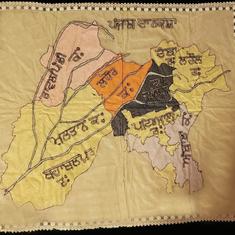India has had very little to celebrate on World Wetlands Day this year as it has lost its wetlands at an alarming rate of 38% in just a decade (1991-2001). Additionally, there continues to be a regulatory vacuum around wetlands, because of which they continue to be ungoverned and unprotected.
Nowhere is it more apparent than in the city of Bengaluru, once famous for its beautiful lakes created by Kempe Gowdas and the Wodeyars of Mysore and then the British. The wetlands in the city are now dying a slow death thanks to rapid growth and urbanisation resulting in encroachment and discharge of sewage and industrial effluents.
Most lakes in the Bengaluru region were constructed in the 16th century by damming the natural valley systems by constructing bunds. They met the drinking water, irrigation and fishing needs of the community and were known to have a positive impact on the ecology and microclimate of the city. They not only help by replenishing the groundwater resources in the vicinity, but also prevented flooding, treated wastewater, arrested sediment loads and functioned as a productive ecosystem.
Current situation
A recent study on lakes titled "Wetlands: Treasures of Bangalore (Abused, Polluted, Encroached and Vanishing)" conducted by a team of researchers headed by Professor Ramachandra TV from the Energy and Wetlands Research Group, Centre for Ecological Sciences, IISc, Bangalore surveyed 105 lakes in the city. It found that only four seemed to be in a good condition while 25 lakes were in a very bad state, fully covered with macrophytes or dumped with solid or liquid wastes and with little or no water.
“We have been working on monitoring the state of the lakes since 1997 and the impacts of urbanisation of the lakes”, said Professor Ramachandra. “We decided to undertake this detailed study following the increasing reports of fish deaths in the lakes and we were requested by people to monitor and explore the situation.”
The physiochemical characteristics of 80 lakes of three different valleys namely Hebbal, Vrushabahavthi and Koramanagala-Challaghatta were monitored during all the seasons for a period of 24 months.
The study found that:
- 98% of the lakes were encroached by mafia.
- 90% of the lakes were sewage-fed due to sustained flow of untreated sewage and industrial effluents, dumping of solid wastes and building debris.
- Water quality analysis of 80 lakes found that almost half of the lakes were highly polluted.
- None of the lakes had water that was fit for drinking according to standards set by the Central Pollution Control Board (CPCB).
- 79% lakes fell under Class E category classified by CPCB as suitable for irrigation, industrial cooling or controlled waste disposal.
- 29% lakes could be classified under Class E and D as suitable for fish culture and wildlife propagation.
- Only one lake, Mylasandra 1 and 2, fell under Class A that was found to be suitable for drinking purposes according to the CPCB classification.
- The lakes in the Koramanagala-Challaghatta valleys were the most polluted as compared to those in the Hebbal, Vrushabahavthi valley.
- Fish deaths were reported in Sankey, Lalbaugh, Jakkur and Munnekolala lakes.
- Foam formation was seen in lakes such as Bellandur, Maragondanahalli, Rampura, Sarakki and Varthur.
- Fire was reported in Bellandur lake.
The report argues that the main reasons for this state of the wetlands are a lack of:
- sense of belonging among all the stakeholders
- sincerity and poor decision making from the bureaucracy
- governance and poor implementation of regulatory norms
- coordination between the many para state agencies who were custodians of the lakes leading to their poor maintainence
“If local people, non government organisations, bureaucrats, regulators, come together and decide to bring about a difference with utmost sincerity, the situation will definitely change. Right to live with clean water and environment is for everyone, not only the influential. If it will be possible to send this report to higher authorities and make them aware that they need to be more accountable, then I think the study has served its purpose," said Professor Ramachandra.
The report ends by making some recommendations for conservation and sustainable management of wetlands such as lakes in the cities:
- The need for good governance systems in place with a single agency with statutory and financial autonomy to act as the custodian of lakes for maintenance and action against polluters.
- The need for conducting capacity studies in cities before implementing any new projects to understand the extent of urbanisation that has already happened and the impact of this on the local ecology and biodiversity such as water bodies and vegetation.
- Documentation of biodiversity in the areas.
- Adopting a holistic and integrated approach to conserving and managing lakes.
- Effective judicial systems for speedy disposal of conflicts related to encroachment.
- Better access to information for the public through digitisation of land records and availability of this georeferenced data with query-based information systems.
- Measures to clean and protect lakes
- Removal of encroachments from lakes, lake water beds and storm water drains, regular cleaning of lakes.
- Proper measures such as fencing to protect lakes and prevent solid waste from going into lakes.
- Demarcation of boundaries of water bodies such as lakes and mapping of the water bodies.
- Preparation of management plans for individual water bodies.
- Valuation of goods and services provided by water bodies.
- Restoration of linkages between water bodies.
- Prevention of pollution of lakes by only letting in treated sewage.
- Implementation of rainwater harvesting principles to maintain and recharge water bodies.
- Better regulatory mechanisms such as the following:
- To make landgrabbing a cognisable, non-bailable offence.
- Implementation of the "polluter pay principle".
- Ban on construction activities in valley zones.
- Restriction of diversion of the lakes for any other purposes.
- Decentralised treatment of sewage and solid waste, and restriction for entry of untreated sewage into the lakes. Management and restoration of already polluted lakes.
- Encouraging involvement of local communities: Decentralised management of lakes through involvement of local communities in the formation of local lake committees.
- Encouraging environmental education and awareness building through schools, colleges, citizen groups and other public forums and encouraging interdisciplinary research on ecosystem conservation and management.
This article was first published on India Water Portal.











